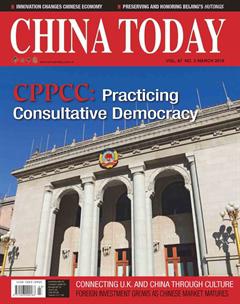Booming Green Bonds Market

China has issued green bonds worth RMB 551.1 billion (about US $86 billion) amid the countrys efforts to pursue sustainable development, according to statistics by Wind, a market leader in Chinas financial information services industry.
In 2017, China issued 185 green bonds, raising a total of RMB 277.3 billion, up 122.9 percent and 32 percent respectively from 2016 levels.
A green bond is an innovative financing method that directs financial resources to environmental protection projects concerning waste disposal, electric automobiles, and renewable energy. The mainlands first green bond was issued by the Agricultural Bank of China and listed on the London Stock Exchange in October 2015.
A report released by PwC in 2016 showed that China has the worlds largest green bond market. Green bonds issued by China accounted for nearly 45 percent of new green bonds worldwide in the first half of 2016.
China has issued guidelines that define a green project and outline the eligibility criteria for green bonds issuers. Renewable Energy Capacity Expands in 2017
Chinas renewable energy capacity continued to expand in 2017, and achieved major improvement in solving related problems, said a senior official with the National Energy Administration in January.
Installed renewable energy capacity reached 650 million kilowatts by the end of 2017, up 14 percent year on year, accounting for 36.6 percent of the nations total installed power capacity, according to the administration.
Most regions with high curtailment rates have seen improvement, according to Liang Zhipeng, deputy director general of the new energy and renewable energy department of the National Energy Administration. For example, the curtailment rate in Gansu Province declined by more than 10 percent in 2017 compared to the previous year.
China plans to raise the portion of renewable and non-fossil fuel to 15 percent of its total energy consumption by 2020, according to its 13th Five-Year Plan. The utilization of renewable energy will be encouraged by letting the market play a decisive role in allocation of resources.
China-ASEAN Trade Volume Hits Record High
Trade volume between China and ASEAN countries hit a record high in 2017, according to Chinas Ministry of Commerce.
Bilateral trade totaled US$514.8 billion last year, up 13.8 percent year on year. Chinas exports to ASEAN countries reached US $279.1 billion in 2017, up nine percent year on year, while imports grew 20 percent year-on-year to stand at US $235.7 billion.
Vietnam, Malaysia, and Thailand were Chinas top trading partners in the region last year. China registered a trade surplus of US $43.4 billion with ASEAN countries, narrowing by 27.4 percent from 2016.
According to Xu Ningning, executive director of the ChinaASEAN Business Council, in 2018, the two sides will enhance infrastructure construction for improving connectivity, promote industrial cooperation, and carry out a series of activities to boost innovation-driven development.
Thriving Rural E-commerce
China saw e-commerce thrive in rural areas last year as the rural population increasingly went online for business and shopping, said a representative of the Ministry of Commerce in January.
Online retail volume in rural areas topped RMB 1.24 trillion(about US $194 billion) last year, up 39.1 percent year on year, according to the ministry. Over 9.8 million online shops were based in rural areas by the end of 2017, creating over 28 million jobs.
Clothing, shoes, and bags are the most popular sub-sectors in rural e-commerce, while online travel booking emerged as the fastest growing niche market, expanding by 66.8 percent year on year.
Rural areas in East China still took the lions share of the total rural e-commerce market, while northeastern and central western villages posted the strongest growth last year. E-commerce development in impoverished counties grew much faster than the national average, rising 52.1 percent year on year, according to the ministry.

